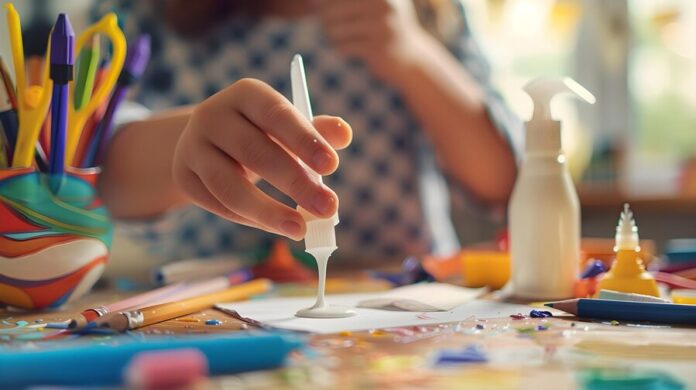Imagine a world where creativity flows freely, emotions are expressed through vibrant colors, and minds are challenged to think outside the box. This is the power of arts education – a transformative force that not only nurtures artistic expression but also unlocks a myriad of cognitive, emotional, and social benefits for students. Arts education offers a wide range of benefits that extend beyond the realm of artistic expression, fostering cognitive, emotional, and social growth in students.
Key Takeaways:
- Arts education enhances cognitive development, problem-solving skills, creativity, and academic performance.
- It promotes emotional intelligence, self-expression, stress reduction, and improved mental well-being.
- Arts education fosters collaboration, cultural awareness, communication skills, inclusivity, and community engagement.
- Integrating arts into the curriculum can lead to increased motivation, engagement, and overall academic achievement.
Cognitive Benefits:
- Enhanced cognitive development through arts activities Let’s kick things off by diving into the cognitive benefits of arts education. Numerous studies have shown that engaging in visual arts, music, dance, and theater activities can have a profound impact on cognitive development. When students immerse themselves in artmaking, their brains light up like a canvas splashed with vibrant colors. 🎨
- Improved problem-solving and critical thinking skills Arts education isn’t just about creating pretty pictures or fancy dances; it’s a catalyst for developing essential problem-solving and critical thinking skills. Imagine a student facing a blank canvas or a composer staring at an empty music sheet. They must analyze, strategize, and think outside the box to bring their vision to life. These skills are invaluable in any field, from science and technology to business and entrepreneurship.
- Increased creativity and imagination In a world where innovation is the driving force, arts education plays a crucial role in nurturing creativity and imagination. When students engage in artistic pursuits, they tap into their innate creative abilities, allowing them to explore new ideas, perspectives, and solutions. This creative mindset can be applied across disciplines, fostering a generation of innovative thinkers and problem-solvers.
- Better retention and recall of information Remember those dreaded history lessons or science lectures that seemed to go in one ear and out the other? Arts education can be a game-changer when it comes to retaining and recalling information. By incorporating arts into the learning process, concepts become more engaging, memorable, and relatable. Whether it’s creating a mural to illustrate historical events or choreographing a dance to represent scientific principles, arts education provides a multisensory learning experience that enhances retention and recall.
- Improved academic performance in other subjects Here’s a little secret: arts education doesn’t just benefit the arts; it can have a ripple effect on academic performance across the board. Numerous studies have shown that students involved in arts education tend to perform better in subjects like math, reading, and writing. Why? Because the cognitive skills developed through arts education, such as critical thinking, problem-solving, and creativity, are transferable to other academic areas.
Listing Format: The cognitive benefits of arts education are vast and far-reaching. Here’s a quick rundown:
- Enhanced cognitive development
- Improved problem-solving and critical thinking skills
- Increased creativity and imagination
- Better retention and recall of information
- Improved academic performance in other subjects
Emotional Benefits:
- Emotional intelligence and empathy through arts expression Art has a way of touching our souls and speaking to our emotions in a way that words often cannot. Through arts education, students gain a powerful outlet for self-expression, allowing them to explore and understand their emotions in a healthy and constructive manner. As they delve into various art forms, they develop a deeper sense of empathy, learning to interpret and appreciate the emotions conveyed through artistic expressions.
- Self-expression and self-confidence In the arts classroom, students have the freedom to express themselves authentically, without fear of judgment or criticism. Whether it’s through painting, dancing, acting, or playing an instrument, they can unleash their unique perspectives and voices. This process of self-expression fosters a sense of confidence and self-worth that transcends the art room and permeates into every aspect of their lives.
- Stress reduction and anxiety relief In today’s fast-paced world, where stress and anxiety are all too common, arts education provides a much-needed oasis of calm and relaxation. Engaging in artistic activities can be a powerful form of stress relief, allowing students to escape the pressures of daily life and immerse themselves in a therapeutic creative process. Whether it’s the rhythmic strokes of a paintbrush or the soothing melodies of a musical instrument, the arts have a profound ability to reduce stress and promote overall well-being.
- Improved mental health and well-being Mental health is a critical aspect of a student’s overall development, and arts education plays a vital role in nurturing it. Through creative expression, students can process and work through their emotions, fears, and challenges in a safe and supportive environment. Additionally, the sense of accomplishment and pride that comes with creating art can boost self-esteem and foster a positive mindset, contributing to improved mental health and well-being.
- Increased self-esteem and self-worth In the arts classroom, every student’s unique talents and perspectives are celebrated and valued. As they create and share their artistic expressions, they receive positive reinforcement and encouragement from their teachers and peers. This nurturing environment fosters a sense of self-esteem and self-worth that can be carried into other aspects of their lives, empowering them to embrace their individuality and pursue their passions with confidence.
Table Format: To illustrate the emotional benefits of arts education, let’s take a look at the following table:
| Emotional Benefit | Description |
|---|---|
| Emotional intelligence and empathy | Arts expression allows students to explore and understand emotions, fostering empathy. |
| Self-expression and self-confidence | The arts provide a safe space for authentic self-expression, boosting confidence. |
| Stress reduction and anxiety relief | Artistic activities offer a therapeutic outlet for reducing stress and anxiety. |
| Improved mental health and well-being | Creative expression helps students process emotions and challenges, promoting overall well-being. |
| Increased self-esteem and self-worth | The nurturing environment of the arts classroom celebrates individuality and boosts self-esteem. |
Social Benefits:
- Collaboration and teamwork through group projects In the realm of arts education, collaboration and teamwork are not just buzzwords; they’re essential components woven into the fabric of artistic pursuits. Whether it’s a theater production, a dance ensemble, or a mural painting project, students learn the invaluable skills of working together towards a common goal. They develop communication skills, negotiation tactics, and the ability to compromise, all while fostering a sense of camaraderie and respect for each other’s contributions.
- Cultural awareness and appreciation Art is a universal language that transcends borders and boundaries, connecting people from diverse backgrounds and cultures. Through arts education, students are exposed to a rich tapestry of artistic expressions from around the world, cultivating a deep appreciation and understanding of different cultures. They learn to embrace diversity, challenge stereotypes, and recognize the beauty and value in different artistic traditions.
- Communication and social skills The arts provide a unique platform for students to develop and hone their communication and social skills. Whether it’s through public performances, critiques, or collaborative projects, students learn to express themselves clearly, articulate their ideas, and engage in constructive dialogue. These skills are not only essential in the arts but also transfer seamlessly to other areas of life, preparing students for successful social interactions and professional endeavors.
- Inclusivity and tolerance The arts have a way of bringing people together, breaking down barriers, and fostering a sense of inclusivity and tolerance. In the arts classroom, everyone’s voice is heard, and every perspective is valued. Students learn to embrace diversity, celebrate differences, and recognize the beauty in each individual’s unique artistic expression. This inclusive environment cultivates a sense of belonging and promotes a culture of acceptance and respect.
- Community engagement and civic responsibility Arts education extends beyond the classroom walls, connecting students with their local communities and fostering a sense of civic responsibility. Through community art projects, performances, and exhibitions, students have the opportunity to engage with their neighbors, share their artistic talents, and make a positive impact. This exposure to community engagement instills a sense of pride, ownership, and a desire to contribute to the betterment of society.
Academic Benefits:
- Improved academic performance in arts subjects It’s no surprise that arts education can have a profound impact on a student’s academic performance in arts-related subjects. When students are immersed in a high-quality arts education program, they develop a deep understanding and appreciation for the various art forms. They learn the techniques, theories, and historical contexts that underpin artistic expression, allowing them to excel in areas such as visual arts, music, dance, and theater.







